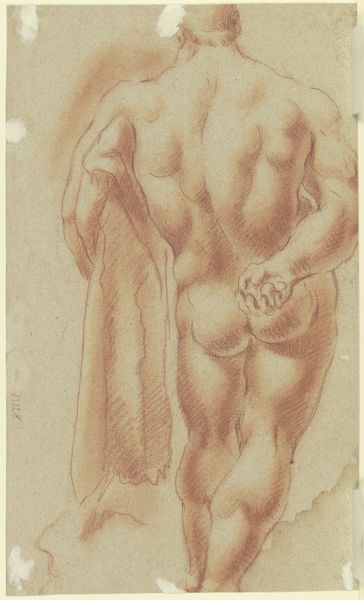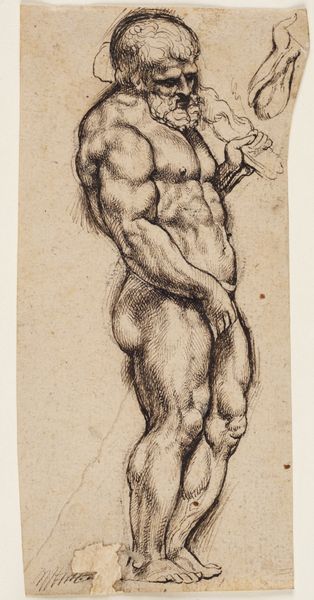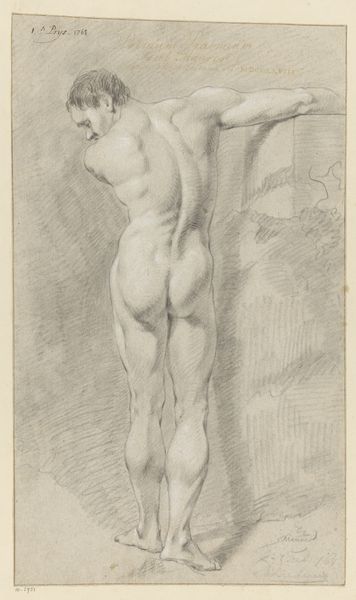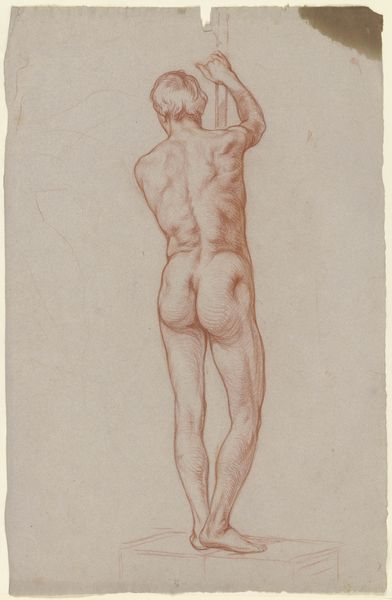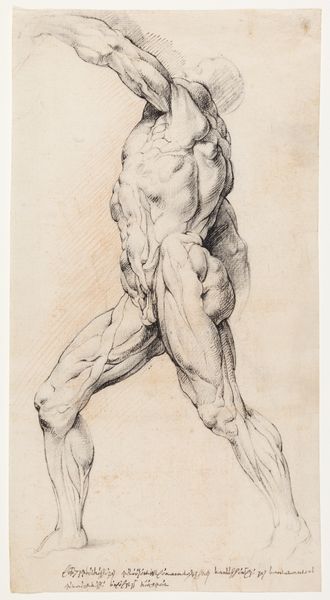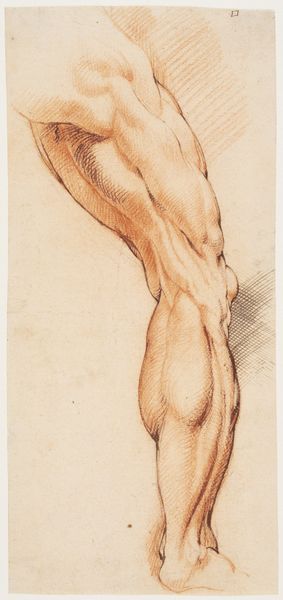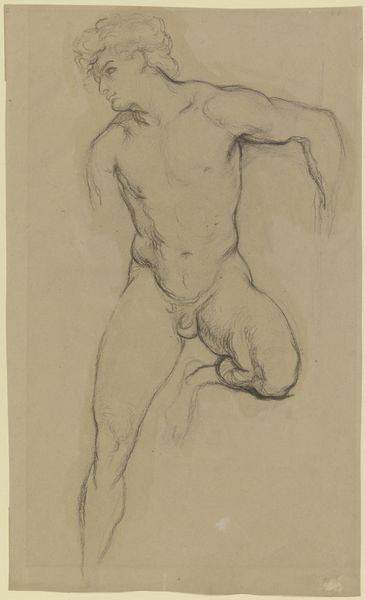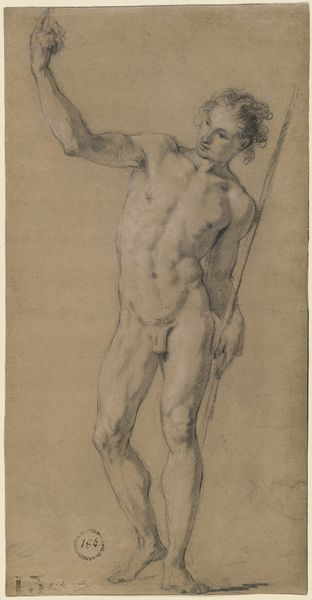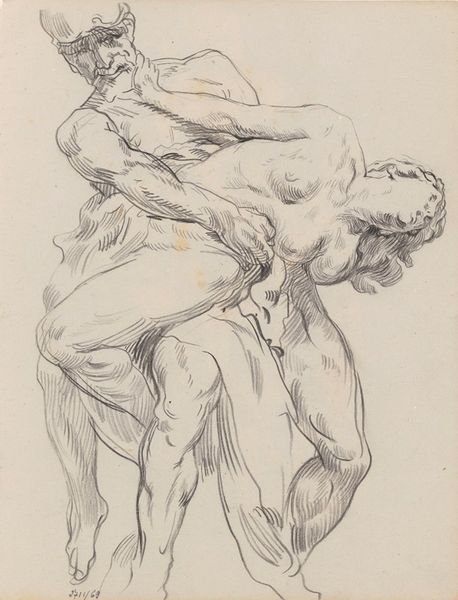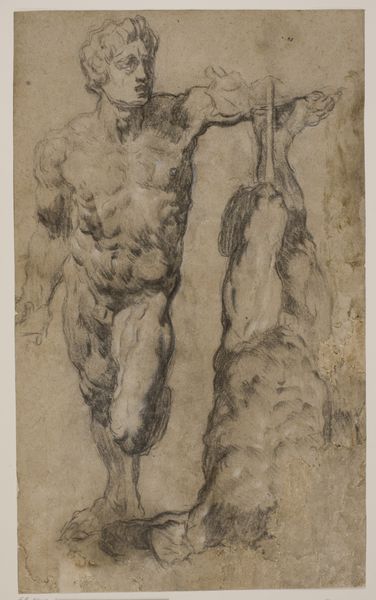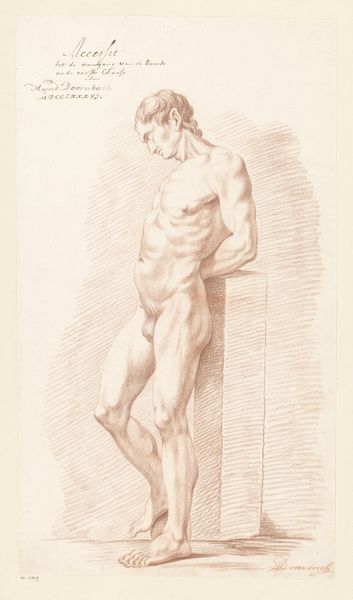
Anatomisk studie af en flået mands venstre ben set fra venstre og hans højre ben i to forskellige positioner (écorché) 1628 - 1630
0:00
0:00
drawing, ink
#
drawing
#
pencil sketch
#
figuration
#
11_renaissance
#
ink
#
pencil drawing
#
academic-art
#
nude
Dimensions: 289 mm (height) x 149 mm (width) (bladmaal)
Editor: This is a drawing by Willem Panneels from around 1628 to 1630, titled "Anatomical study of a flayed man's left leg seen from the left and his right leg in two different positions." It's a pretty graphic study of human anatomy rendered in ink, which makes the subject even more visceral. How do you see this work relating to its historical context? Curator: This écorché, a flayed figure, stands within a longer tradition. While the image is unsettling to a modern viewer, remember its purpose. This drawing reflects the intense anatomical study that was crucial for Renaissance and Baroque artists. Understanding musculature allowed artists to represent the human form with greater naturalism, a key artistic goal of the time, heavily influenced by the rise of scientific thinking and medical dissection, both initially viewed with suspicion. Editor: So, this wasn't just about artistic expression? Curator: Not primarily. It was also a social practice, linked to scientific advancement and artistic training. Art academies valued anatomical knowledge highly. Can you imagine how this type of drawing would be received by the public, not just by the artistic or medical community? Did they view this artwork differently at the time it was made, as opposed to today? Editor: That’s a good question. I suppose it depended on who was viewing it. Someone affiliated with the church might be a little shocked or scared to see such detailed and gruesome imagery of the human body, while artists at the time found it helpful in their understanding of the figure. Curator: Precisely. Its value lay in its educational and artistic potential. It bridges the gap between art and science. Now it resides within a public art institution, displayed and available to everyone to see and analyze. What are your thoughts on its current place within the museum’s collection? Editor: It makes you think about the changing role of art, and how something created for study can become a powerful work of art in its own right and spark dialogues like this one. Curator: Exactly! This dialogue is the heart of what museums strive to create today.
Comments
No comments
Be the first to comment and join the conversation on the ultimate creative platform.
